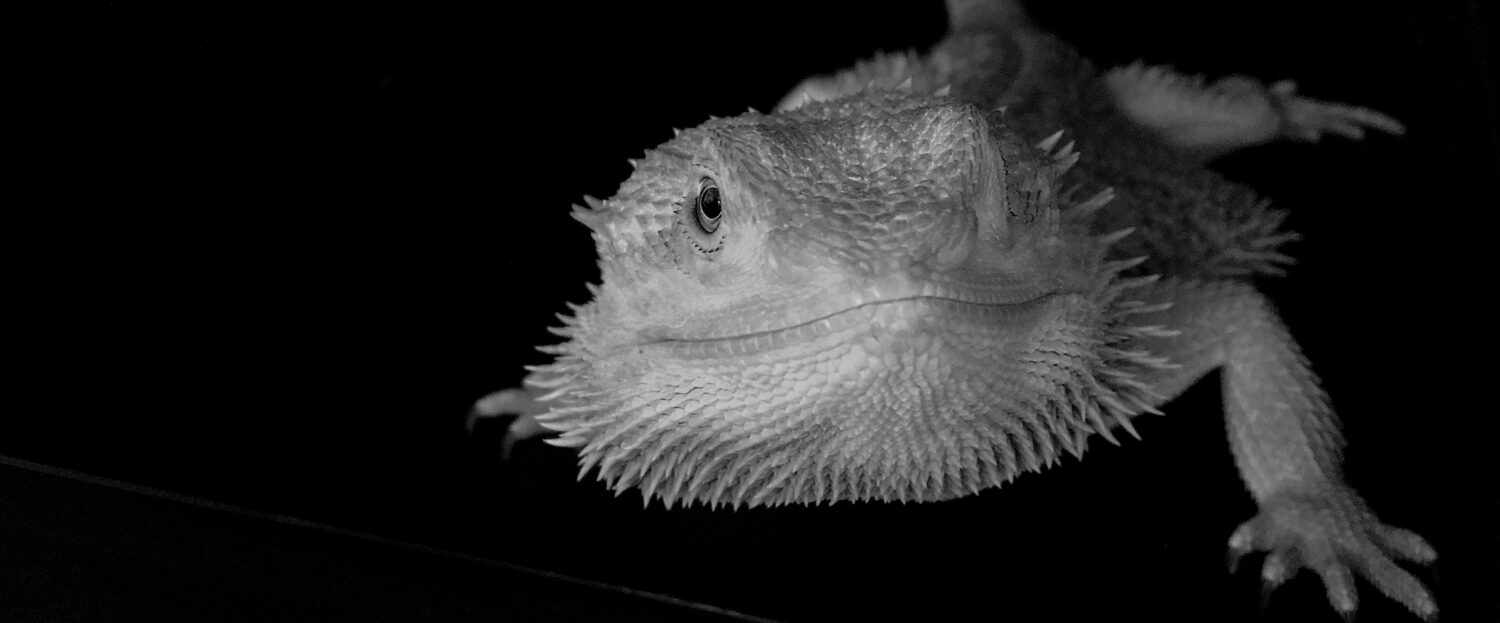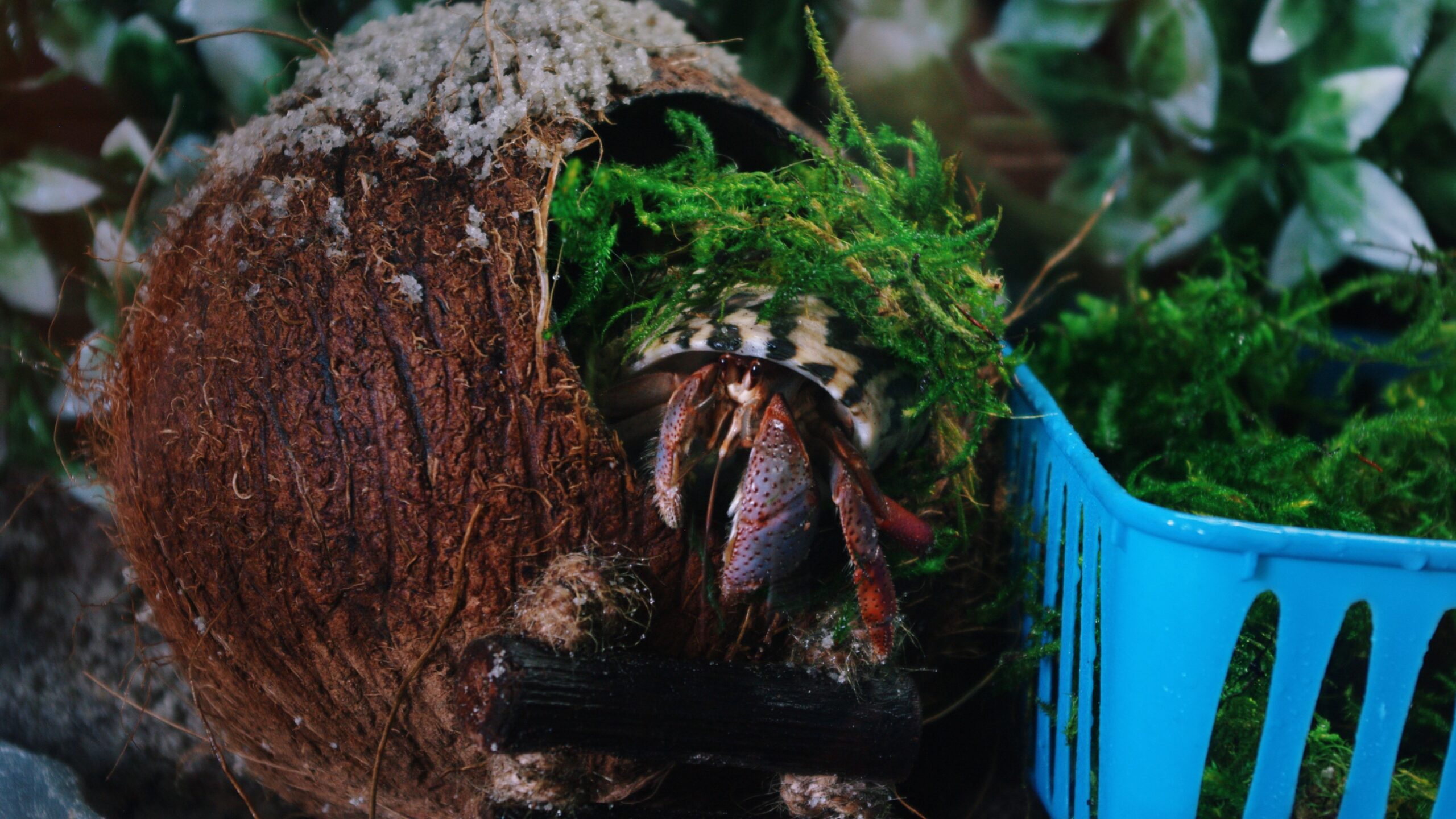We’re a quarter of a century into this millennium, and yet mainstream hermit crab care still leaves a lot to be desired. That’s why I’ve put together this checklist—a simple guide to ensuring your hermit crabs thrive in an environment that’s suited to their needs.
This post may have affiliate links, which means I may receive commissions if you choose to purchase through links I provide (at no extra cost to you). Thank you for supporting the work I put into this site!
The Crabitat—Space is Key

A hermit crab enclosure can never be too big, but it can definitely be too small. Many experienced crab keepers will agree that anything smaller than 40 gallons is far from ideal. Hermit crabs need space to roam, climb, hide, and explore!
Say Goodbye to Critter Keepers
A critter keeper is not an appropriate home for a hermit crab. Their natural habitat spans vast, sandy beaches, so keeping them in cramped, tiny enclosures is simply cruel. If this strikes a chord with you, there’s no need to feel ashamed or embarrassed—simply focus on making positive changes from here on out.
From Solo to Social: Building Strong Crab Mate Relationships
Hermit crabs are not “hermits”—mine are living it up, partying all night long!
My crabs party all night long and they each have distinct personalities. Giving them friends is absolutely necessary, and the more crabs, the more space they need!

My Crabitat, Camp Leakey, is home to a mix of small and large crabs: Birute, Jane, Slightly, Scratch, Weary, Idgie, and Doctor Moreau. These guys are night owls—always having a blast, running wild, and wreaking havoc. I spy on their antics with CCTV, and let me tell you, it’s a show!
Humidity and Temperature Control
A glass lid is a must to maintain proper humidity levels, and it’s much safer than a screen topper.

Crabs can’t climb glass like they can a screen, which means they won’t escape.[see Scratch below].

Substrate
For the substrate, a mixture of 5 parts play sand to 1 part cocofiber is perfect.
A good rule to follow when reaching substrate depth is to allow enough room for your crabs to burrow at least 2-3 times their height (shell included).
I use Quikrete Play Sand (great product but it is significantly cheaper at Lowes) and Eco Earth Cocofiber.
Crab Pool Checklist
Hermit crabs need access to both freshwater and saltwater.

CRAB POOL CHECKLIST
- water primer
- aquarium salt
- Tupperware
- river rocks
- craft mesh
- zip ties
- aquarium tubing
- y splitter
- air stones
- air pump
- two 1 gallon jugs
Collect what you need and head over here to learn how to make crab pools.
Opportunities to Climb and Hide
Providing hermit crabs with several hides allows them to sleep and lurk under safe cover.

Hermit crabs are great climbers, so give them ladders, trees, and hanging decorations to let them do what they love to do. Hermit crabs are hopelessly clumsy, so giving them opportunities to explore provides endless entertainment as a crab keeper. Many people build their enclosures tall and wide to model after the most beneficial environments for their hermit crabs.

These opportunities can be created with coconut hides, plastic egg crate, aquarium decorations, artificial vines and branches, cholla wood, and cork bark.
Build the Perfect Shell Shop for Your Hermit Crabs
Fill a basket with plenty of shells for your hermit crab to change into.

The Crab Street Journal recommends you provide 3-5 suitable shells per crab.
For reference, I have seven hermit crabs and approximately fifty shells in my Crabitat. I clean them every other month and layer a thin coat of EVOO inside each shell to entice my crabs to poke around and try new shells.
Moss Pit: Create the Perfect Grazing Space for Your Hermit Crabs
Fill a basket with sphagnum moss for your hermit crabs to graze on.

Raised moss pits and bridges made of moss provide access to higher levels of the Crabitat and offer plenty to graze on. Keep in mind that mold can be a real issue in humid enclosures, moss covered decorations should be monitored closely.
Thermometer and Hygrometer
Simple enough. Hermit crabs have non-negotiable heat and humidity requirements.
When setting up your Crabitat, keep in mind that your temperature should be between 74-78 degrees and your humidity should sit around 78%.
Heating Pad
A heating pad is the easiest way to achieve the climate your hermit crabs need (especially in winter) to live healthy, happy lives. A heating pad with temperature controls makes monitoring the climate in your Crabitat simple.
A Bug Dealer
Providing your hermit crabs with a diet rich in nutrition is easily achieved by purchasing food from a shop designed to make hermit crab food.




Etsy is the best place to find homemade food with real ingredients and original recipes.
These are the Crab Dealers at the top of my checklist:
Hermit Grub
Hobo Hermie
If you have a store with affordable grains, nuts, and dried fruits then stock up those because your crabs will love them.
Humidity Mister
I use a spray bottle of salt water to mist my Crabitat as needed.
Hot Checklist Item: Toys!
Believe it or not, hermit crabs love to play!
After you have added climbing opportunities, throw in some toys to stimulate your hermits crabs during their all night long parties.

Toys come in all shapes and forms for hermit crabs, they enjoy throwing around cholla wood, climbing cork bark, and uprooting any new thing you put in their Crabitat.
Hot Checklist Item: A Medical Isolation Tank
It’s a good idea, as with any aquatic creature, reptile, or amphibian, to keep an extra tank around.

A medical isolation tank is helpful to hermit crab keepers for use when isolating new or sick crabs from their tank mates. Medical tanks can be relatively small, I prevent the crab from molting while I monitor it’s health.
Did you find this article useful? Let me know by leaving a comment below or follow us on Instagram.
You can find most of the items on this checklist on Amazon!


Great doc!! It really helped me with my hermit crabs!1